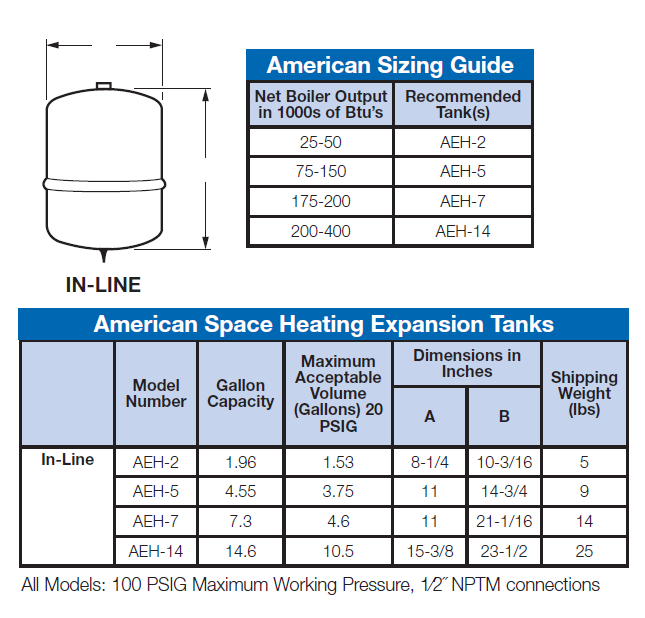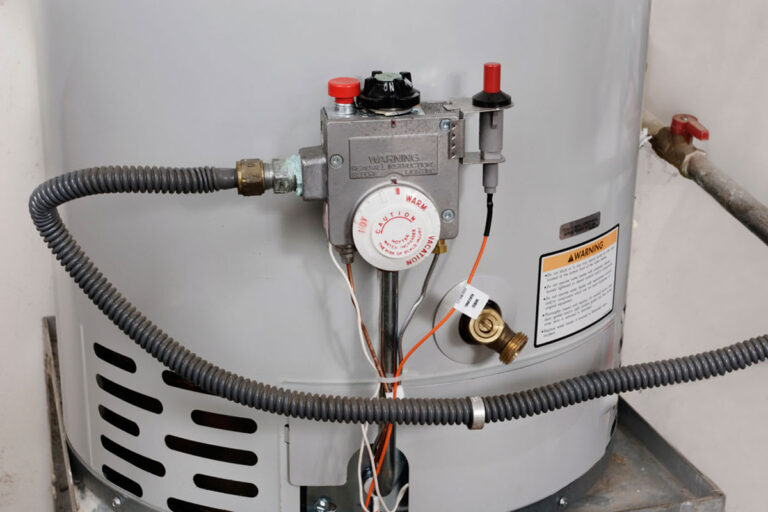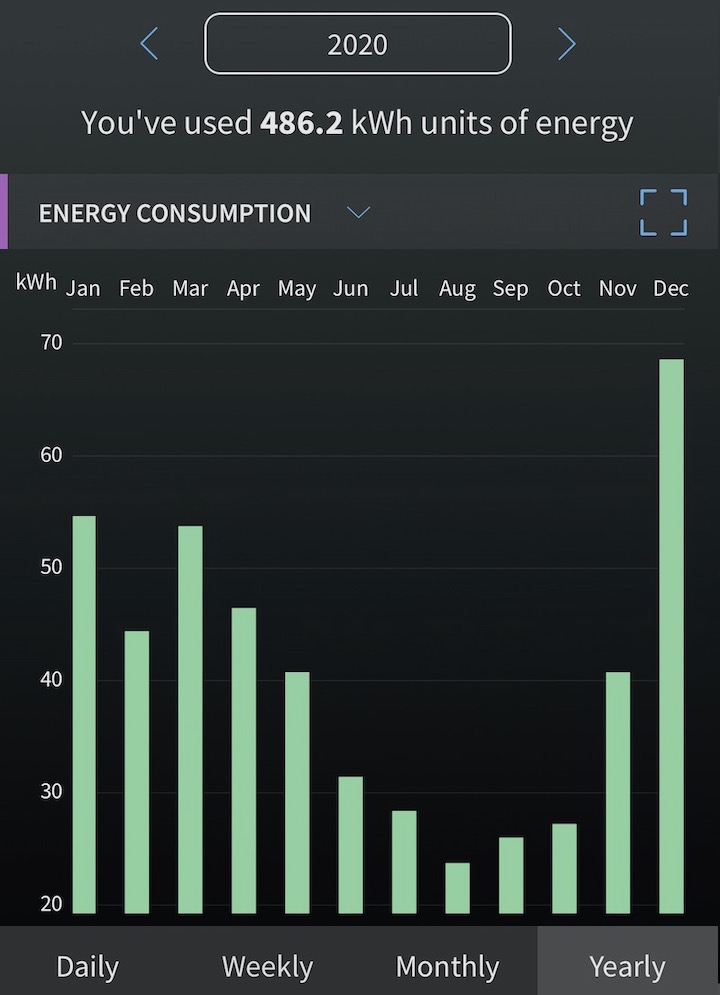Are you noticing unusual noises from your water heater, or perhaps there’s a sudden drop in water pressure? These could be signs that your water heater expansion tank pressure setting isn’t quite right.
The correct pressure setting can save you from unexpected repairs and help extend the life of your water heater.
This might sound complex, but it’s simpler than you think. Imagine having peace of mind knowing your water heater is operating efficiently and safely.
Stay with us, and we’ll guide you through the essentials of setting the right pressure, so you can prevent issues before they start. Ready to dive into the details? Let’s get started!
Importance Of Expansion Tanks
Expansion tanks play a crucial role in maintaining the efficiency and safety of your water heating system.
Many homeowners overlook their importance, leading to unexpected issues. Think about the last time you had to deal with a plumbing problem.
An expansion tank could have been your saving grace, preventing damage and ensuring smooth operation.
Role In Water Heating Systems
Expansion tanks absorb excess water pressure generated when water is heated. As water heats up, it expands, and without an expansion tank, this increased pressure can stress your pipes and appliances.
By providing a space for this extra water, expansion tanks ensure your system operates seamlessly. Imagine your water heater working tirelessly without an expansion tank. It’s like running a marathon without proper shoes.
Preventing System Damage
Without an expansion tank, the risk of damage increases significantly. High pressure can lead to leaks, broken pipes, and even damage to your water heater.
Have you ever had to replace a pipe because of a leak?
This could be avoided with a properly set expansion tank. Ensuring your tank is set at the correct pressure can save you from costly repairs and extend the lifespan of your system.
It’s essential to understand how the pressure setting of your expansion tank can impact the overall health of your water heating system.
Check the manufacturer’s guidelines and consult with a professional if you’re unsure about the correct pressure setting for your tank.
Are you confident that your water heating system is protected?
Taking the time to check your expansion tank might be the difference between a smoothly running system and a sudden plumbing emergency. Prioritize your water heater’s health today.
Basics Of Pressure Settings
The basics of pressure settings are crucial for any water heater expansion tank. Proper pressure ensures the system operates efficiently.
It also prevents potential damage. Understanding these settings helps maintain the tank’s performance. This knowledge extends the lifespan of your water heating system.
What Is Pressure Setting?
Pressure setting refers to the pre-charge of the expansion tank. It’s the air pressure inside the tank before water fills it.
This pressure must match the system’s water pressure. If set incorrectly, issues may arise. Too high or too low settings affect performance.
Impact On System Efficiency
Correct pressure settings optimize system efficiency. Proper settings reduce the risk of water hammer. They also prevent unnecessary strain on pipes.
This means less wear and tear. Efficient systems use less energy. This saves money on utility bills.
Choosing The Right Pressure
Setting the correct pressure for a water heater expansion tank is crucial. It ensures efficient operation and prevents damage. Incorrect pressure can lead to leaks or reduced efficiency. Understanding how to choose the right pressure helps maintain a healthy system.
Factors To Consider
Several factors influence the ideal pressure setting. The water pressure in your home is the first consideration.
Expansion tanks need to match this pressure closely. Tank size also affects pressure settings. Larger tanks may require different pressure levels compared to smaller tanks.
Consider the manufacturer’s recommendations. These guidelines often provide the best pressure setting for each model.
Common Pressure Ranges
Pressure settings for expansion tanks typically range between 40 to 80 psi. Most residential systems work well within this range.
Lower pressures, like 40 psi, suit small homes or those with low water pressure.
Higher pressures, around 80 psi, fit larger systems or homes with high water demands.
Ensure the pressure setting suits your specific needs to optimize performance.

Credit: kcwaterheater.com
Step-by-step Pressure Adjustment
Adjusting the pressure in a water heater expansion tank is essential for optimal performance. First, turn off the water supply. Then, use a pressure gauge to check the tank’s air pressure. Match this to the home’s water pressure for efficiency.
Proper settings prevent damage and maintain system health.
Adjusting the pressure of your water heater expansion tank can seem daunting, but with the right guidance, you can do it yourself.
Ensuring the correct pressure setting is crucial for the efficiency and longevity of your water heating system. This guide will walk you through each step, making the process straightforward and stress-free.
Tools Needed
To start, gather the necessary tools. You’ll need a tire pressure gauge, an air pump, and a wrench.
Having these tools at hand ensures you won’t have to pause midway through the adjustment process.
A tire pressure gauge helps you accurately measure the pressure in the expansion tank.
An air pump allows you to adjust the pressure as needed. A wrench may be necessary to access the tank’s air valve.
Safety Precautions
Your safety is paramount when working on any home appliance. Always turn off the power to your water heater before starting any adjustments.
This prevents potential electrical hazards. Ensure the water supply to the heater is off. This prevents any accidental leaks or water damage.
Wear protective gloves and goggles to shield yourself from any unexpected issues.
1. Check the Current Pressure:
Attach the tire pressure gauge to the tank’s air valve. Note the current pressure reading.
2. Compare with Recommended Pressure:
Refer to your water heater’s manual for the recommended expansion tank pressure. This is usually around 12 psi but can vary.
3. Adjust the Pressure:
If the pressure is too low, use the air pump to add air. If too high, release some air by pressing the valve.
4. Recheck the Pressure:
After adjusting, reattach the pressure gauge to ensure the pressure is now within the recommended range.
5. Secure Everything:
Once adjusted, ensure all valves and connections are secure. Turn the water supply and power back on.
Have you ever considered how much a simple pressure adjustment can save you on energy bills?
Properly set pressure ensures your water heater operates efficiently, reducing unnecessary energy consumption.
Taking a few minutes to adjust the pressure can extend the life of your water heater. It also helps prevent costly repairs down the line. Don’t overlook this simple yet effective maintenance task.
Signs Of Incorrect Pressure
Understanding the signs of incorrect pressure in your water heater expansion tank is crucial for maintaining an efficient and safe home environment.
Have you ever wondered why your water heater isn’t performing optimally?
The answer might lie in the pressure settings of your expansion tank. Identifying these signs early can save you from costly repairs and potential hazards.
Identifying Warning Signs
It’s essential to recognize the subtle hints your water heater might be sending you. If your hot water suddenly feels lukewarm or you hear unusual noises coming from your heater, it could be a pressure issue.
A leaking tank or fluctuating water temperature are clear indicators of incorrect pressure settings.
Consider your recent experiences with your water heater. Have you noticed any changes in its performance? These changes could be warning signs of pressure problems. Trust your instincts and investigate further if something feels off.
Potential Risks And Consequences
Incorrect pressure settings can lead to more than just minor inconveniences. Over time, they may cause significant damage to your water heater and plumbing system. High pressure might result in leaks, which can lead to water damage in your home.
On the flip side, low pressure can cause inefficient heating, meaning you’ll use more energy and pay higher utility bills. Imagine the frustration of a cold shower on a chilly morning due to incorrect pressure settings. Do you want to risk these potential consequences?
It’s crucial to address these issues promptly. Regular maintenance and proper pressure settings can prevent these risks.
Can you afford not to take action? Ensure your water heater expansion tank operates efficiently to avoid costly repairs and maintain a comfortable home environment.
Maintenance And Regular Checks
Regular maintenance ensures your water heater expansion tank functions properly. Check the pressure setting to prevent leaks and damage. Adjust the pressure regularly for optimal performance and a longer lifespan.
Maintaining and regularly checking your water heater expansion tank pressure setting is vital for ensuring a long-lasting and efficient heating system. Many homeowners overlook this simple yet crucial task, risking potential damage and costly repairs.
By understanding the importance of these checks, you can prevent unexpected issues and maintain a comfortable home environment.
Importance Of Routine Checks
Regular checks of your water heater expansion tank can save you from bigger headaches down the line. Without proper maintenance, pressure imbalances can lead to leaks or even tank ruptures.
Imagine waking up to a flooded basement because your expansion tank failed. That inconvenience and cost can be avoided with routine inspections. Checking pressure settings ensures that your system is working efficiently, which can also help lower energy bills.
Diy Vs Professional Inspection
Deciding between handling maintenance yourself and hiring a professional can be challenging. DIY checks can be a cost-effective way to ensure your system’s basic functionality.
You can invest in a simple pressure gauge to monitor the pressure yourself. However, for those not comfortable with DIY tasks, a professional inspection might be the safer route.
Professionals offer expertise and can spot issues you might overlook. Consider the peace of mind that comes with knowing your system has been thoroughly checked by someone experienced. When was the last time you checked your water heater expansion tank? Could a simple check save you from future troubles?
Troubleshooting Common Issues
Adjusting the pressure in a water heater expansion tank can prevent leaks and extend the tank’s life. Check and set the pressure to match your home’s water pressure, usually around 40-60 psi. Regular maintenance helps in avoiding common issues and ensures efficient operation.
Troubleshooting issues with your water heater expansion tank can be a bit puzzling. Yet, understanding these common problems can make your life much easier. The key is knowing what to look for and how to address it effectively.
Pressure Fluctuations
Pressure fluctuations can be frustrating. You might notice your water pressure varies throughout the day.
This often points to a problem with your expansion tank. Imagine waking up to a perfect shower, only to find it turns into a trickle by evening.
That’s a classic sign of pressure instability. Check the pressure gauge on your expansion tank. If it’s not within the manufacturer’s recommended range, adjustments are necessary.
Have you checked the air pressure? It’s crucial to ensure the air pressure in your tank matches your home’s water pressure.
Expansion Tank Leaks
Leaks are another common issue. A leaky expansion tank can lead to water damage and increased utility bills.
Regularly inspect your tank for any signs of water around its base or on the floor nearby. Small drips might not seem like a big deal initially. But they can escalate quickly into a larger problem.
I once ignored a minor leak, thinking it was just condensation. A month later, it turned into a costly repair job.
Always check the connections and seams of your tank. Are they tight and secure? If not, tightening them might solve your problem. If leaks persist, it could be a sign of a bigger issue, like a faulty bladder or corrosion.
Dealing with these common issues can prolong the life of your water heater system. Have you faced any of these challenges with your expansion tank? Taking action early can save you time, money, and headaches in the long run.

Credit: www.americanwaterheater.com
Upgrading Your Expansion Tank
Expansion tanks play a key role in your water heater system. They handle the extra pressure created when water heats and expands. Over time, your current tank may not work well. It might need an upgrade. This section guides you on when to upgrade and how to choose the right model.
When To Consider An Upgrade
Old or leaking tanks signal a need for an upgrade. Frequent pressure issues also mean it’s time for a change. If water pressure fluctuates often, check your expansion tank. Newer models offer better efficiency and safety.
Choosing The Right Model
Selecting the right expansion tank ensures smooth operation. Check your water heater’s size and specifications first. Choose a model that matches your heater’s requirements. Look for durable materials that resist rust. Consider the warranty offered by the manufacturer. It shows their confidence in the product’s longevity.

Credit: www.youtube.com
Conclusion
Setting the right pressure in your water heater expansion tank is vital. It prevents damage and ensures efficient operation. Regular checks help maintain system health. Balance is key. Too much pressure risks leaks; too little affects performance. Use a pressure gauge for accuracy.
Adjust as needed. Consult a professional for complex issues. Simple steps save time and money. Proper maintenance extends your water heater’s lifespan. Always prioritize safety during adjustments. Your system will run smoothly with correct settings. Enjoy reliable hot water daily.
Keep your home safe and comfortable.



